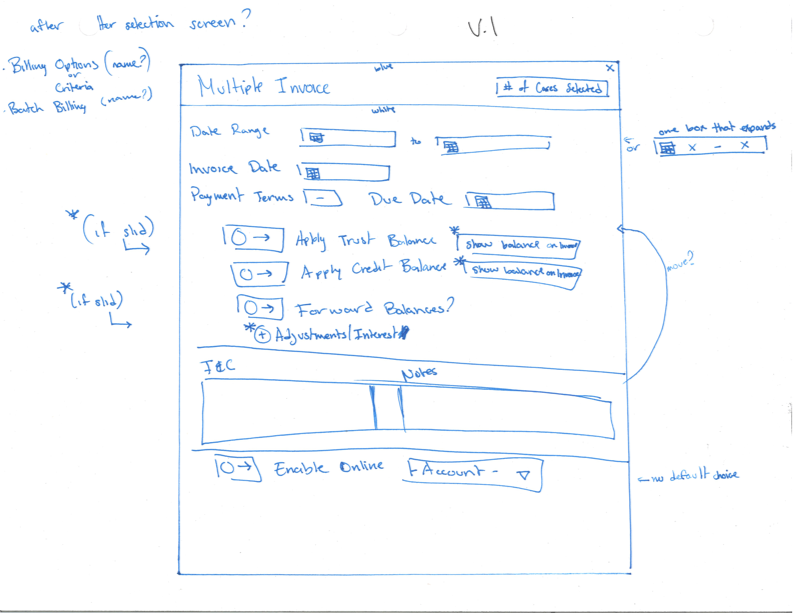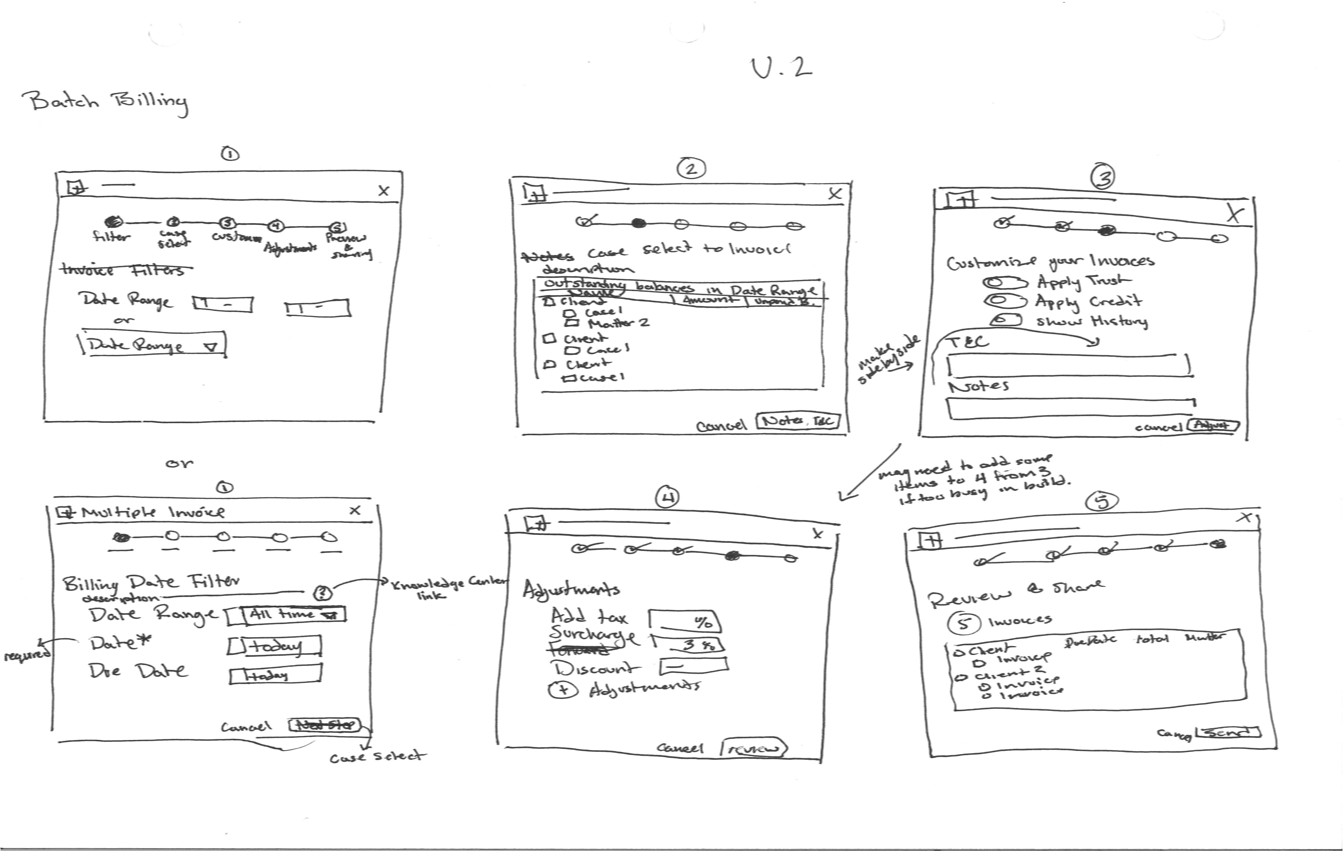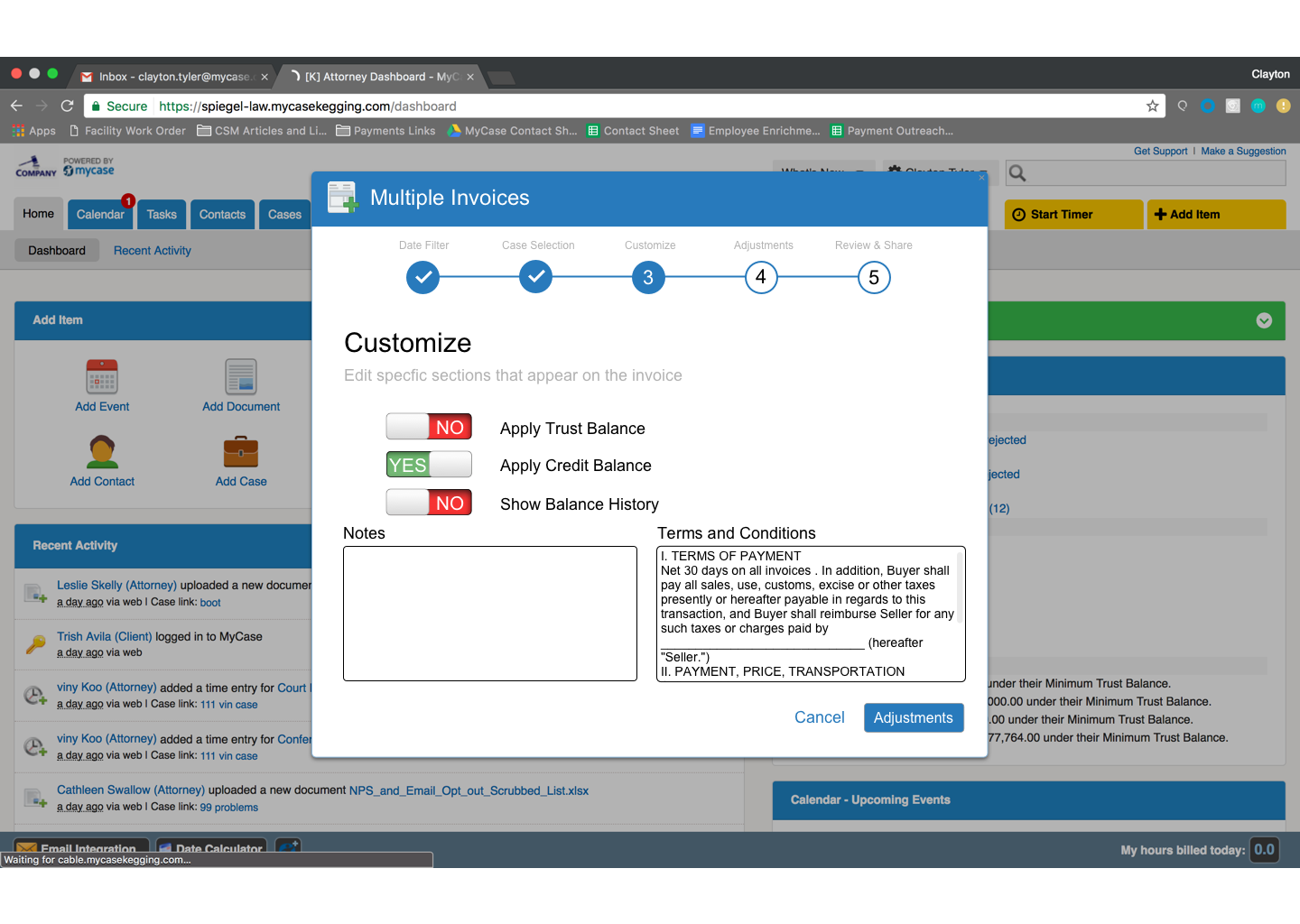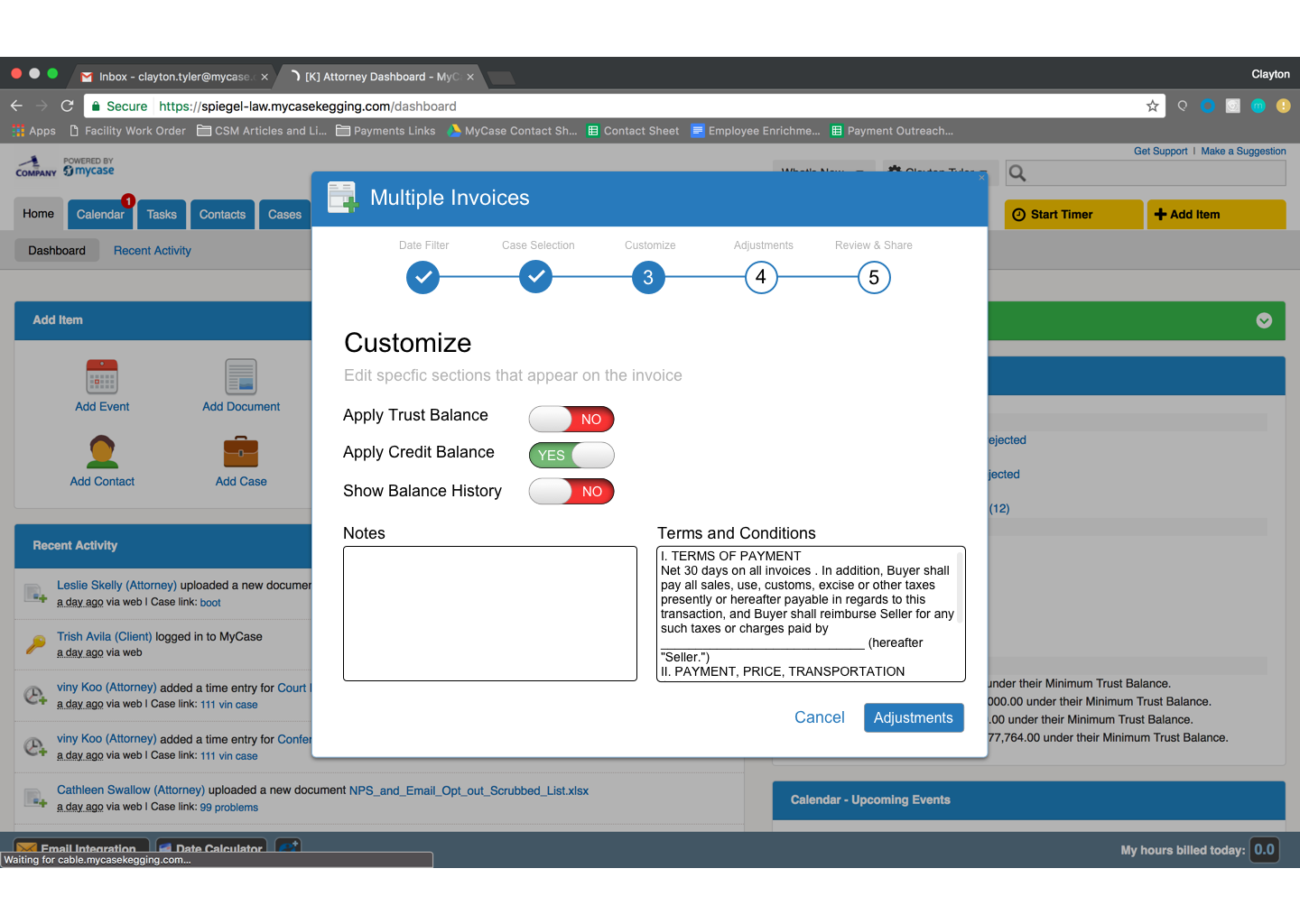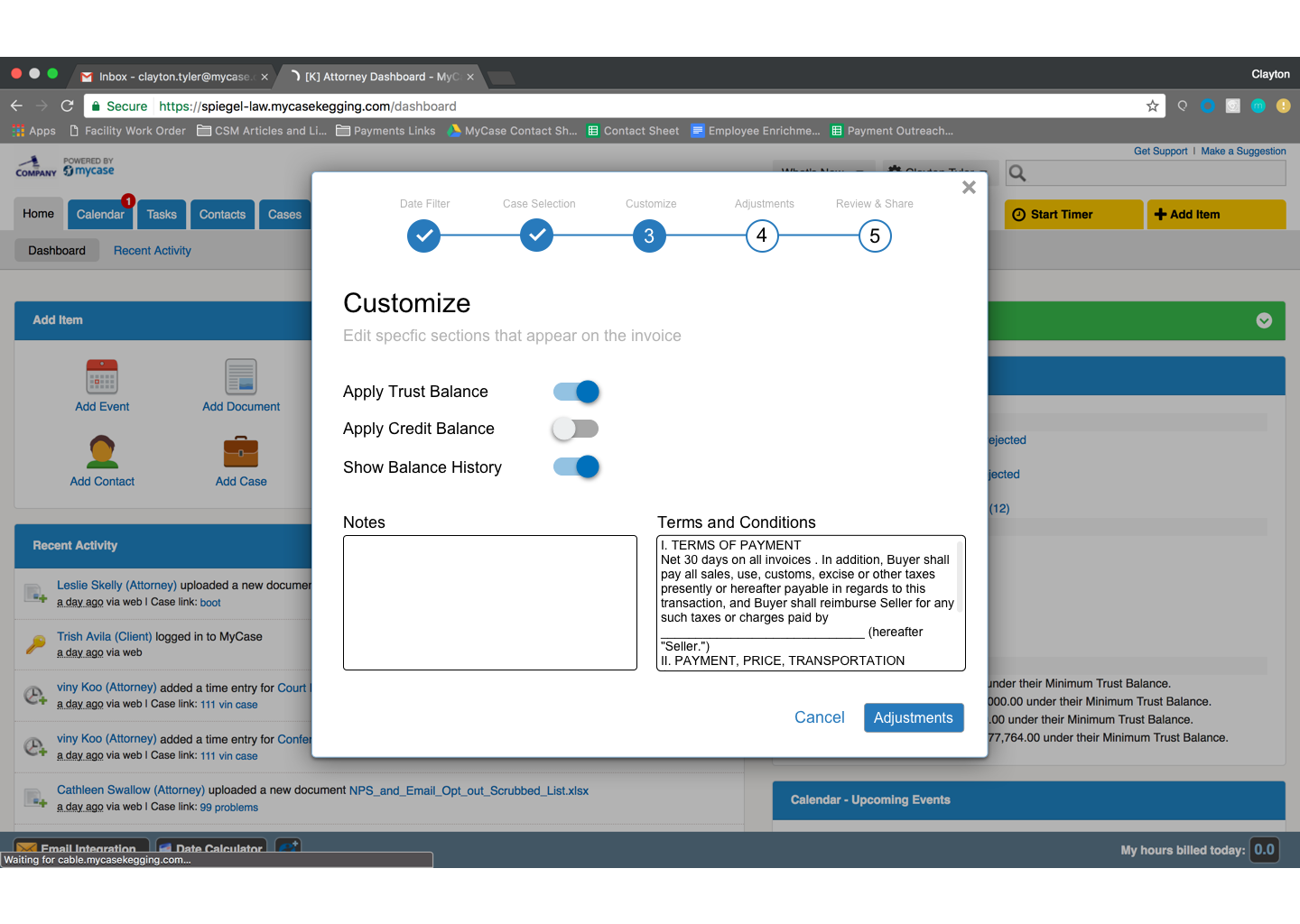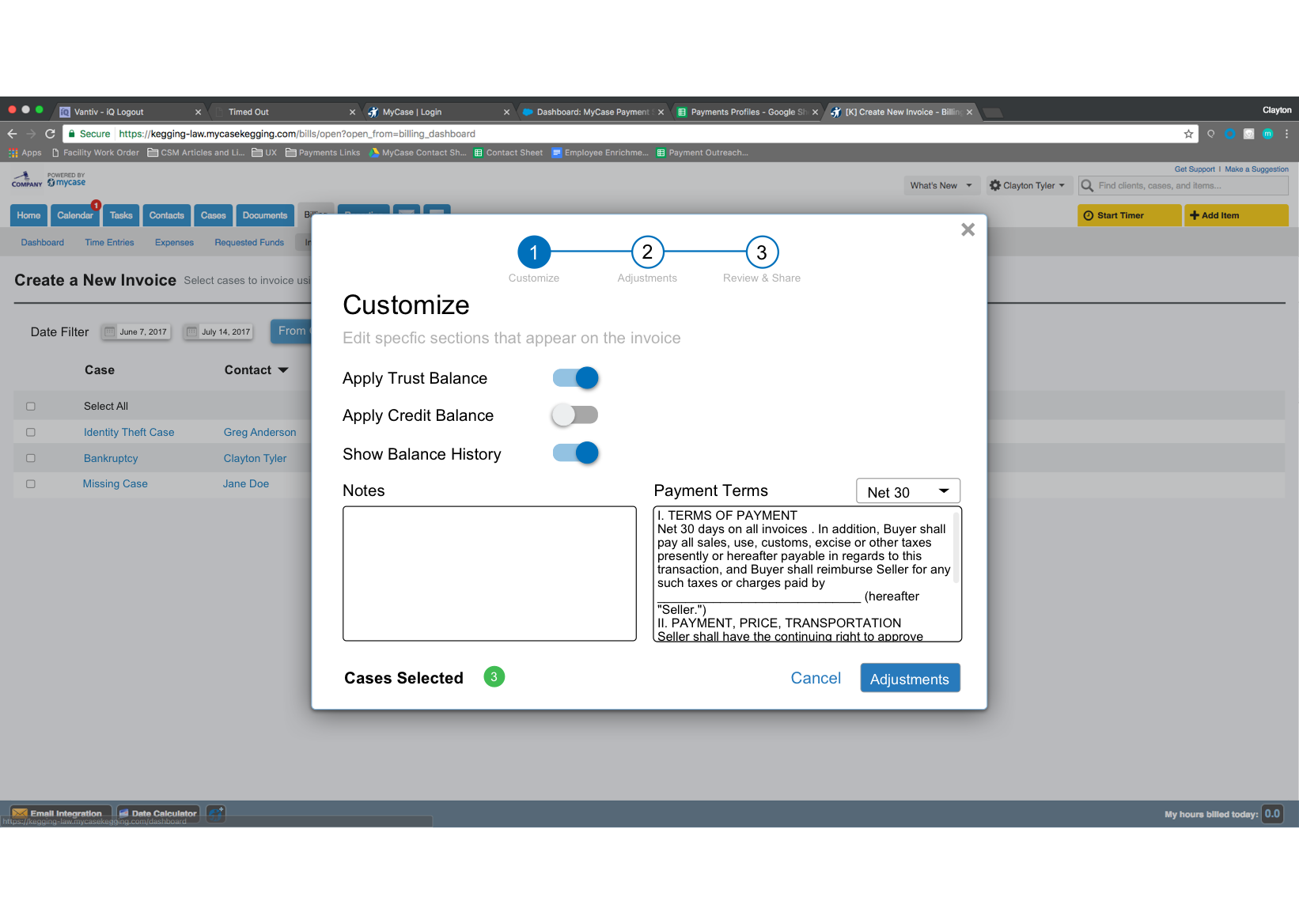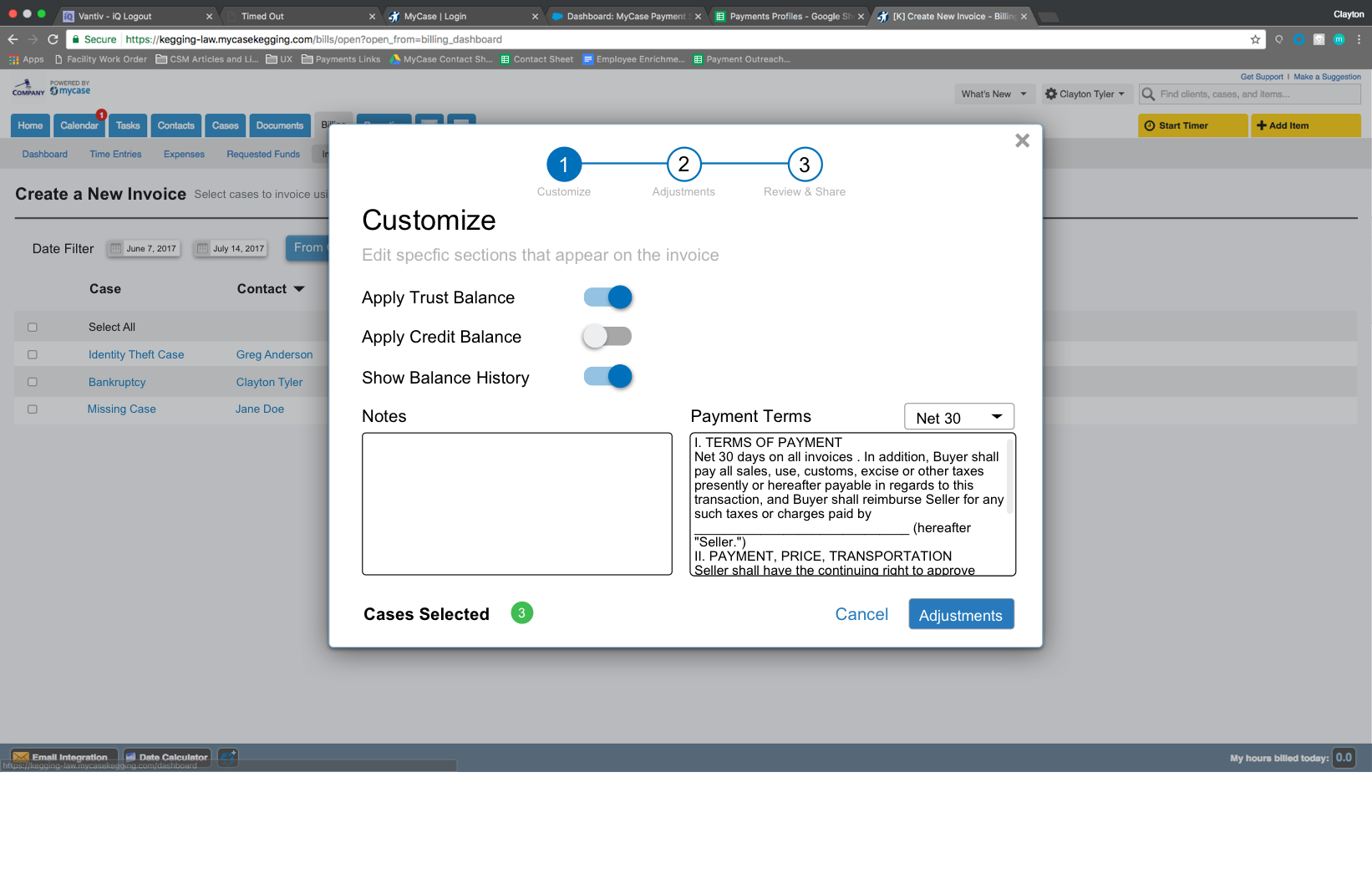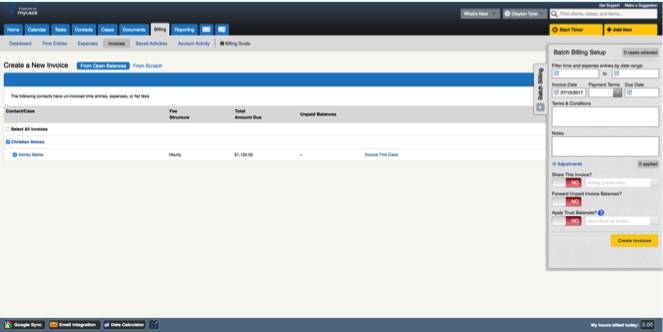Batch Billing rethinking how to create invoices
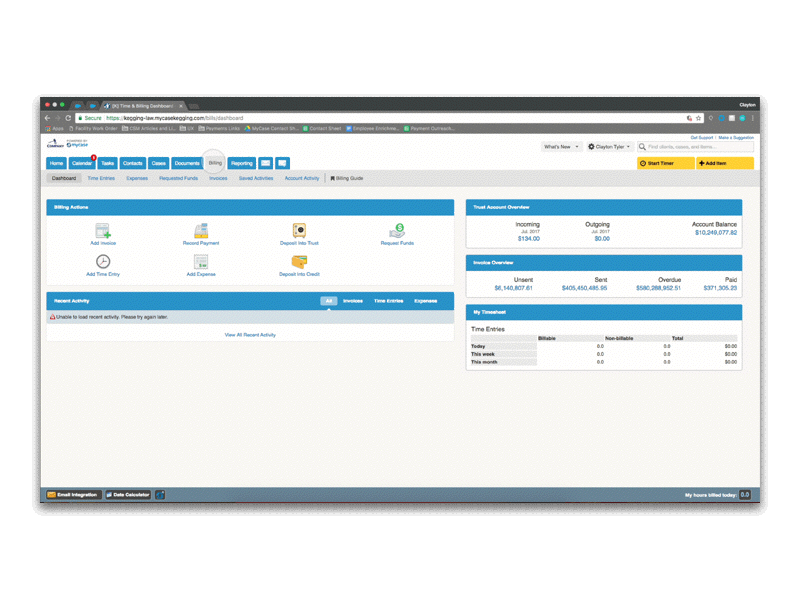
Project Description
Batch billing was designed to achieve rapid invoicing for multiple matters while giving users the ability to adjust in bulk. We observed that the service isn't meeting the goal to allow the user to adjust their bills adequately and is not accessible to new users, which is causing many support cases and product feedback requests to improve the feature.
How might we improve batch billing so that our customers are more successful? We will know we succeeded when we see increased usage of the feature and reduced call volume to the customer service team.
